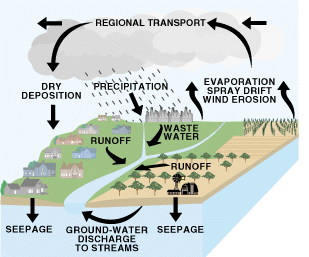Current Results

Increased Production
Since the 1950's, food production, particularly of staple food crops such as cereals, has increased dramatically both in the United States and globally, averting famine as the global population has increased. The use of monocultures has led to increased efficiency in farming, and hence to consolidation of farmland into larger farms (King).

Reliance on a Few Varieties
By the 1990's, high yield varieties accounted for half of all the wheat planted globally, and more than half of all of the rice planted (Harvesting). This is a pattern that has not reversed itself since.
- In 1991, 6 varieties accounted for 71% of the corn planted (Muir)
- 9 varieties account for half the wheat in the US (Muir)
- In 2008 GMO crops, which tend to be monocultures, were planted, globally, on 125 million hectares (Paarlberg 165). This is approximately equivalent to 17.5% of the land area of the United States.
Socioeconomic Effects and Regional Applicability
In North America, agricultural production has increased dramatically but generally led to the consolidation of small family farms into large, commercial operations. In recent years, a few varieties of high yield corn that cannot be eaten directly but must be processed into food additives or animal feed, such as Yellow Dent corn, have come to account for the majority of corn grown in the US. Some people believe that the proliferation of corn, particularly of this nature, is responsible for the development of the meat and fast food industries (King).
In Latin America, although food production increased, so did socioeconomic imbalances among farmers. The expense of the technologically improved seeds and the equipment and products needed to maximize their growth meant that only a small group of wealthy, elite farmers (who already controlled most of the land) were able to purchase and employ them (Paarlberg 59). This increased their wealth and often allowed them to expand their farming operations, forcing peasant tenants off their land; these peasants then took to farming less fertile and often more ecologically delicate lands, to the detriment of the environment. Also damaging to the environment was excessive irrigation and overuse of pesticides, which were made very easily accessible to the rich by subsidies from the government (60) .
In Asia, where there were fewer large farming estates and more easily available credit, Green Revolution technologies were adapted fairly widely by small farmers (60). As production increased, so did rural wages. The increased production averted a potential mass famine in Asia, where a population boom was occurring, and by this limited the destruction of the millions of acres of wildlife habitat that would have had to be cleared for farming to feed the growing population if the old, low yield varieties were still being used (61).
The standard high yield varieties of crops such as wheat and rice were introduced to Africa with little success; they were not the dominant food crops in most of Africa and they were poorly suited for the African climate. As well, high yield crops require regular irrigation and only about 4% of agricultural land in Africa is irrigated (65).

Environmental Effects
Overall, the use of Green Revolution and GMO seeds has negatively impacted the environment. The planting of monocultures diminishes the diversity of the agricultural ecosystem and often increases the abundance of pests that plague a particular variety of a crop. The intensive use of pesticides and herbicides permitted by large plantings of crops designed to withstand them leads to highly toxic run-off that contaminates surrounding areas and is often spread by its entrance into bodies of water (Paarlberg 114). In the case of certain GM crops, like those containing the Bt gene, which allows the plant to produce its own pesticide, the pollen is toxic to non-target species and can be damaging to their populations when it blows out of crop fields (Altieri 29). The heavy use of pesticides and herbicides permitted by monocultures also raises concerns about the development of strains of insects and weeds that are resistant to them (27).
17.5% of the land area of the United States is slightly greater than the combined areas of Nevada, Arizona, New Mexico, and Texas (they are about 17.1% of US land area)
Monocultures are not well buffered against disease, pest, and climate changes, and thus variance of these factors from ideal conditions can cause a large impact on crop yield. Since the beginning of the Green Revolution fluctuations in crop yields have become more dramatic (Muir), which has made the supply of staple crops less reliable. An example of this can be seen in US corn yields.

Image from: <http://water.usgs.gov/nawqa/pnsp/pubs/fs97039//>

The Diminishing Seed Pool